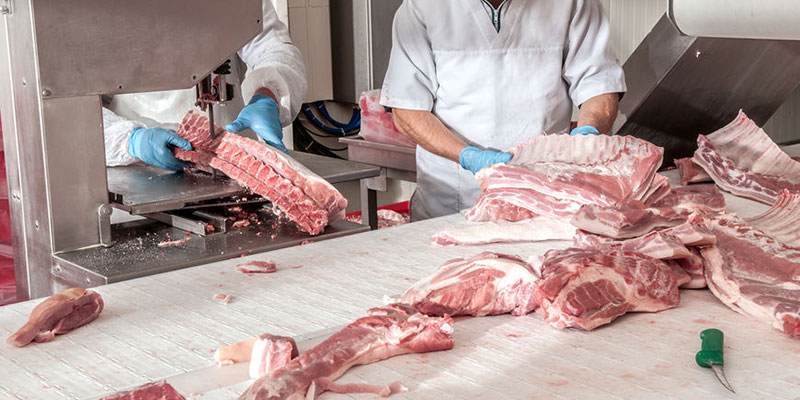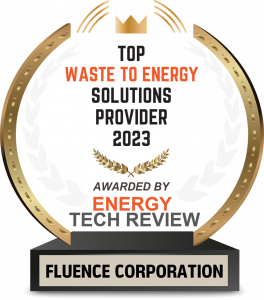Meat processing is a water-intensive industry, and its effluent is heavy with hard-to-treat organic load.
When treating waste streams with a high organic load, waste-to-energy tech can improve effluent quality and help pay for itself
The world consumes a lot of meat. One estimate is that by 2050, approximately 465 million metric tons of beef, poultry, pork, and other meats will be produced annually. Much of it will be processed in slaughterhouses, using processes that are particularly water-intensive.
For example, in cattle slaughterhouses, wastewater streams typically include processing water from the slaughtering line as well as from cleaning, producing a highly variable organic load of fats and other animal waste products. Poultry, egg, and dairy production also produce a wide range of animal wastes.
Untreated slaughterhouse wastewater streams, with their high biological oxygen demand (BOD) and chemical oxygen demand (COD), can create severe problems for municipal sewage treatment systems. Because of this, in-house wastewater treatment is a top priority for the meat industry, but one that comes with many challenges.
Solutions for Food Processing Waste
Because of the challenges presented by meat-processing wastewater, several types of treatment are typically involved.
Dissolved air flotation (DAF), one of the first stages, is used to remove suspended particles from the wastewater. DAF removes roughly 80% of organic load and 65% of nitrogen load. After this stage, the sludge is usually treated using anaerobic digestion.
Anaerobic digestion relies on microorganisms to break down biodegradable material in the absence of oxygen. It can be used to process a wide range of organic material, from food and animal waste to grass and paper waste.
Anaerobic digestion has an added benefit: The process produces biogas — primarily methane (CH4) and carbon dioxide (CO2) — which can be converted into electrical and thermal energy. This clean, reliable source of energy allows food-processing facilities such as slaughterhouses not only to offset operating costs, but also to turn waste into an income source.
Fabio Poletto, General Manager of Fluence Italy, explained in an interview with Water Online, “It’s useful to know that 1 ton of floated sludge at 10% digested mass can produce up to 60 m3 of methane.”
After anaerobic digestion, the remaining mass — known as digestate — is separated by consistency. Solid sludge, usually less than 20% of the incoming waste stream, can be used or further treated and sold as fertilizer. Liquid digestate is subjected to additional processes, which may include nitrification and denitrification to meet target standards.
Fluence’s membrane aerated biofilm reactor (MABR) wastewater treatment technology excels at denitrification, recently being tested to meet stringent California Title 22 standards and PRC Class 1A standards in China. MABR also has slashed the energy requirements of WWT while shrinking the required footprint. The technology is available skid-mounted, in plug-and-play Aspiral™ units, or as submersible SUBRE units for retrofitting legacy plants.
Energy From Food Waste
As a bonus, these processes, when balanced properly, can lower operational and capital expenditure. This is especially true for waste-to-energy technologies like anaerobic digestion.
Of the 1.3 billion tons of food wasted worldwide each year, less than 11% is converted to energy. If half the food waste generated in the United States were treated using anaerobic digestion, it would generate enough electricity to power more than 2.5 million homes for a year, according to the U.S. Environmental Protection Agency.
The amount of biogas generated from food waste depends on its moisture content and composition. Food waste with low moisture content will generate more biogas, as will fats and proteins.
But, when it comes to the bottom line, does waste-to-energy make sense?
In fact, operators of such systems know they may pay for themselves. Poultry processing companies like Italy’s Avimecc Group — which processes 40,000 chickens a day — are realizing savings with Fluence waste-to-energy systems, and Fluence is currently installing a 1.7 million waste-to-energy system for ArreBeef Energia in Argentina.
Retrofitting Existing Operations
Retrofitting an existing wastewater treatment system may seem daunting when an operation can’t be shut down for construction. But when respected Italian poultry processing company Amadori was outgrowing its wastewater treatment plant and wanted to lower disposal cost, it contacted Fluence, which designed, built, and commissioned an anaerobic digestion and nitrification-denitrification system within the plant.
The completed 3,180 m3/d retrofit includes DAF pretreatment, anaerobic digestion, dehydration, nitrification-denitrification, and a final clarifier. It produces 3,600 Nm3/d of valuable methane to fuel a cogenerator while producing effluent that meets EU environmental standards. No break in operation was necessary for Fluence to design, build, and commission the retrofit.
Fluence offers a wide range of solutions based on more than three decades of experience in treating food and beverage production wastewater. How can we help solve your next water, wastewater, or energy challenge? Please contact Fluence with any questions or to request a quote.


